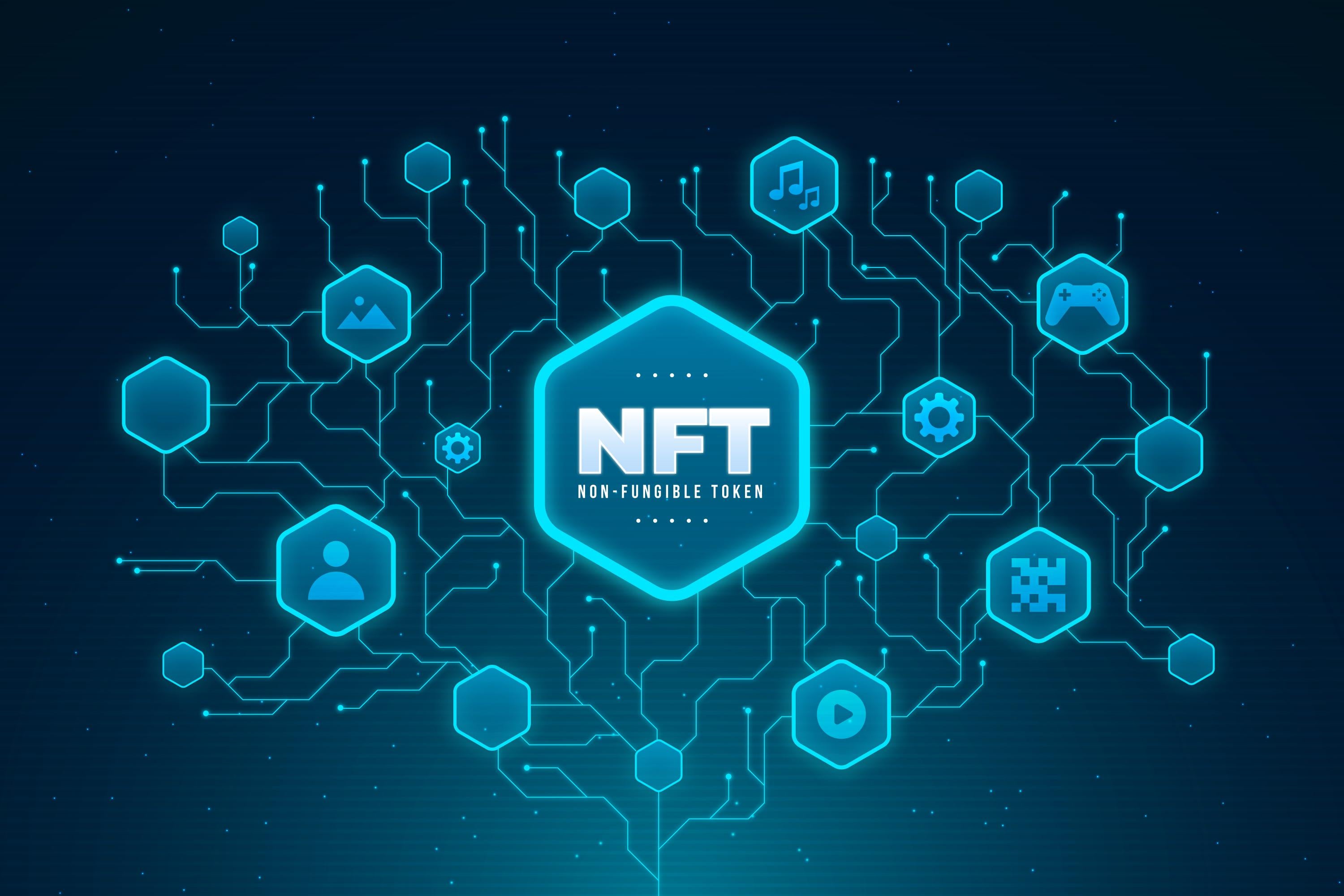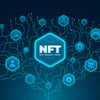What do you need to know about NFT Art and the 3D world

Have you ever wondered what the future of art looks like? In recent years, a remarkable transformation has swept the world of art, reshaping the way we perceive and value digital creativity. At the center of this transformation are Non-Fungible Tokens (NFTs), a revolutionary that has taken the art market by storm. With the use of blockchain technology, NFTs are digital assets, each unique and irreplaceable. NFT Art are a new medium for artistic expression and ownership that has gained the support of artists, collectors, and enthusiasts.
Picture this: You're strolling through a virtual art gallery, but instead of admiring timeless paintings, you're gazing at a pixel-perfect artwork on your screen. But here's the kicker – you own it. Not just a copy, but the real deal. This magic is made possible by Non-Fungible Tokens, or NFTs.
However, the NFT phenomenon is not a standalone development. The dynamic world of 3D modeling and its convergence result in a compelling combination that gave rise to 3D NFT art. In this blog, we'll take a look at the intersection of NFTs and the 3D modeling field.
I. Understanding NFT Art
A. What Are NFTs?
Non-fungible Tokens, or NFTs, represent a paradigm shift in the realm of digital assets. Unlike cryptocurrencies such as Bitcoin or Ethereum, which are transferable one-to-one, NFTs are one-of-a-kind and indivisible. Each NFT is a digital ownership certificate that exists on the blockchain, a decentralized ledger technology. Because of their uniqueness and tamper-proof traits, NFTs are the ideal vehicle for reflecting digital art ownership, revolutionizing how we value and exchange digital creations.
The introduction of NFTs altered the way we perceive and own digital art. Before NFTs, it was simple to copy, share, or download digital art without paying its owner. NFTs, on the other hand, bring true ownership, guaranteeing that artists are recognized and compensated for their work. As a result, NFT art has become a revolutionary force that empowers both makers and collectors, enabling a more welcoming and transparent art environment.
B. The World of NFT Artists
3D artists have discovered a healthy creative playground within the vast NFT art. They have access to a huge canvas in the 3D world to express their creativity, which enables them to realize their visions in previously unthinkable ways.
As 3D artists enter the NFT sector, they face a unique mix of potential and problems. It is exhilarating to be able to create in three dimensions, but negotiating the complexities of blockchain technology and the changing NFT platforms can be challenging. To overcome these obstacles, nevertheless, they are motivated by their enthusiasm and inventiveness.
3D NFTs' limitless potential for creativity and storytelling is what draws 3D artists to them. Because 3D models are so immersive, creators may immerse audiences in fascinating, interactive worlds, enhancing the intimacy and interest of the creative experience.

II. The 3D NFT Revolution
A. Introduction to 3D NFTs
3D NFTs are an advancement in the field of NFT art. These tokens signify ownership of three-dimensional digital models and artworks, in contrast to their 2D counterparts. Their immersive style is what distinguishes them. Owning a 3D NFT entitles you to ownership of a virtual object that can be manipulated in a 3D environment rather than just a picture.
3D models are appealing because they can take viewers into virtual worlds. They redefine the bond between producers and collectors by providing a dynamic and interactive experience that goes beyond still photographs. 3D NFTs' immersive quality has been crucial in elevating them to the fore of the digital creative industry.
B. What are 3D NFTs
3D NFTs are e-tokens that signify ownership of 3D digital artwork and models. 3D NFTs offer an immersive experience by enabling users to interact with virtual items in a 3D environment, in contrast to standard 2D NFTs, which typically present static images. These tokens have grown in popularity in the field of digital art because they may take viewers into exciting virtual worlds and redefine the interaction between artists and collectors.
C. How Do 3D NFTs Work?
A process is used to produce and sell 3D NFTs. An artist begins by creating a 3D model with specialist software, putting their imagination into every polygon and texture. When the artwork is finished, it is minted as an NFT, which entails developing a special token on the blockchain to signify ownership of the 3D masterpiece.
In order to prove the legitimacy and origin of 3D NFTs, blockchain technology is essential. In order to record transactions and ownership changes, it functions as an unchangeable ledger. As a result, transparency is improved and the possibility of fraud is decreased because the owner of an NFT can now unquestionably establish their possession. Thus, the NFT ecosystem's foundation is now blockchain technology, protecting the interests of both collectors and artists.
III. The Art of 3D Design
A. Low Poly vs. High Poly
The degree of intricacy and depth in models, or the "poly count," is one of the key differences in the field of 3D design. Low poly and high poly models are at opposite ends of the spectrum. Low poly models use a little amount of polygons to build objects or characters, and they are characterized by their simplicity. High poly models, on the other hand, are extremely detailed and use a lot of polygons to attain a high level of realism.
Low-poly models are by design simpler than their high-poly versions. They frequently have straight lines, pointed edges, and little embellishments. This simplicity has a number of benefits. Low poly models are computationally effective, making them perfect for real-time applications like virtual worlds and video games. Their understated design can be aesthetically arresting while elegantly and simply expressing complex thoughts.
Additionally, low poly models are adaptable and work well with a variety of artistic styles. Their abstract nature enables painters to concentrate on form and composition, encouraging viewers to use their imagination. This adaptability has aided low poly design's lasting appeal in the field of 3D art and elsewhere.
B. Finding and Buying 3D NFT Art
The process of finding and buying 3D NFT Art begins with exploring NFT marketplaces, where wealth of digital creations awaits. These marketplaces are digital galleries where artists from around the world showcase their distinctive 3D NFTs.
To start you will need a digital wallet with cryptocurrency funds, as most transactions in the NFT space are conducted using cryptocurrencies like Ethereum. Once you have your wallet set up, you can browse through the listings, each representing a distinctive 3D NFT.
When it comes to buying and selling 3D NFTs, there are platforms that serve as the bridge between creators and collectors. To purchase a 3D NFT, you can place bids on items you're interested in or make direct purchases. Keep in mind that the value of NFTs can fluctuate, so it's essential to do your research and buy from reputable artists and platforms. Also, consider supporting emerging artists as they navigate this exciting frontier of digital art. As a collector, you have the opportunity to own a piece of the digital art revolution. Your ownership of an NFT not only supports artists but also gives you a front-row seat in the ever-evolving world of 3D NFT art.

IV. Expanding 3D World: NFTs Beyond Art
The effects of 3D NFTs go well beyond the limitations of conventional art. These adaptable tokens are used in a variety of fields, including architecture, virtual worlds, and gaming. 3D NFTs are used in the gaming industry to represent in-game assets such as character skins, weaponry, and special items. The distinction between the digital and physical worlds is muddled since players can really own and exchange their digital things.
Virtual worlds rely heavily on 3D NFTs to construct and furnish virtual real estate. Users can buy, customize, and construct virtual properties, resulting in one-of-a-kind digital experiences and economic ecosystems. These virtual environments foster innovation and social interaction, with 3D NFTs at the heart of their existence.
3D NFTs have made considerable advances into areas such as architecture and design, in addition to gaming and virtual worlds. 3D NFTs are used by architects to display their designs in immersive virtual settings. Clients can explore architectural concepts in 3D, giving them a more in-depth understanding of proposed projects. This technology is transforming how we view and interact with architectural designs, providing a glimpse into the virtual architecture of the future.
The applications of 3D NFTs continue to advance, ushering in a new era in which digital ownership pervades all aspects of our life.
V. Conclusion
As a result of our study into the field of 3D NFT art, we have learned that it is a dynamic and developing one. 3D NFTs are useful in many contexts than just traditional visual arts, including architecture, gaming, and virtual environments. Their immersive design and distinctive ownership models are altering industries and opening up new possibilities for both producers and collectors. In this rapidly evolving space, staying informed and engaged is crucial. Explore the world of 3D NFTs, support NFT artists, and be part of this digital art revolution. Your involvement can shape the future of art and technology, bridging the gap between the physical and virtual worlds.




